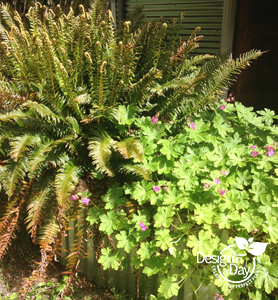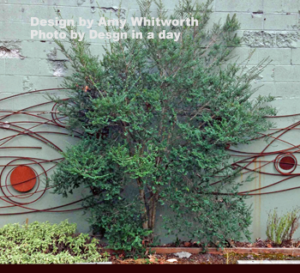Garden Designer Loves Low Maintenance Plant Sempervivum Tectorum – Hens & Chicks
Low Maintenance Plant for Portland has Versatility
I love to use these plants hens and chicks -Sempervivum in my low maintenance landscape designs. The name Sempervivum means ‘always alive’ so even new gardeners will be successful with this plant. Hens and chicks are everyone’s darling because the modern landscape aficionados think they were invented for them, people with black thumbs can be successful and those looking for a nostalgic cottage garden plant will all be happy.
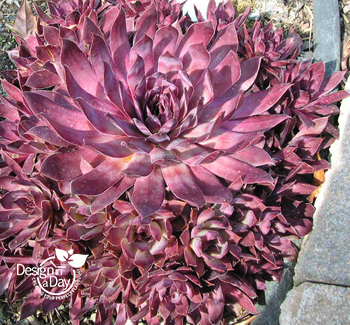 They add fascinating texture and leaf color that lasts throughout the year. Plus I love the way they add the finishing touch to a planting area. The fact that they are low maintenance, low water to drought tolerant and suppress weeds is a huge bonus.
They add fascinating texture and leaf color that lasts throughout the year. Plus I love the way they add the finishing touch to a planting area. The fact that they are low maintenance, low water to drought tolerant and suppress weeds is a huge bonus.
The Original Roof Garden Plant
From medieval times hens and chicks were planted in stone or tiled roofs and also in thatched roofs. It was thought when used on a thatch roof that it would protect from fire caused by lightening. The plants also provided some insulation for homes and helped to moderate heat. They can extract water from dew and fog and thrive. Many would go dormant in summer and return in the fall with the rains. Native to the Mediterranean region these plants were also used for roofs all over Europe. Planting roof leek (hens and chicks) on your roof was thought to cause good health and good fortune.
So what’s so great about these plants for groundcover in Portland?
Drought Tolerant Ground Cover
Sempervivum are a low water to fully drought tolerant plant here in the PNW. I feel some water is required if siting in full day sun (8 to 10 hours) and many varieties of Sempervivum will scorch at least initially in full hot sun the first year. I don’t plant mine right next to a concrete walk or blacktop driveway if full day sun. That is too hot and some plants will shrivel and die or look so bad you will wish they just up and did so. Not fussing about watering is my idea of low maintenance but proper placement is part of how we get there.
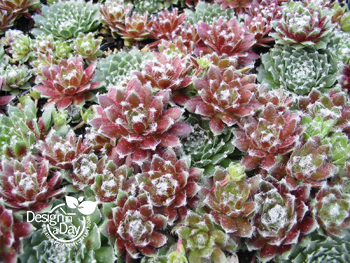 Low Maintenance Plant Suppresses Weeds
Low Maintenance Plant Suppresses Weeds
I have some nice sized colonies of hens and chicks at my vacation property. Perhaps 24” x 4’. They may get watered once a month in the summer. They suppress weeds by growing so thickly, (which is an excellent attribute for a low maintenance plant) but they are also attractive in the winter. Their colorful rosettes are a cheery sight in our drizzle and foggy mornings. I especially like when they spread to form a colony. And I like it even better when other ground covers “cuddle up” next to them making interesting vignettes of leaf color, texture and proportional diversity.
Care and Maintenance of Sempervivum – Hens and Chicks
Important Tips for Establishing Sempervivum in Portland, Oregon
Plant them in a well draining soil. They will tolerate our clay top soil as long as it is not in a low spot where water collects. I find adding a half inch of a tiny gravel on top of the soil between the plants every year is very beneficial and may speed getting the plants to multiply into a colony. Don’t bother planting them in heavy compacted clay. They will rot. Don’t put the tiny gravel at the bottom of the hole. They will rot.
Water them once a week the first summer until they are established and a little extra water during very hot weather is a good idea. Be sure to reach down, press and feel the soil, don’t guess, so you don’t over water and rot them. Their 2nd summer you can water them less. After several years they typically survive without much or any irrigation.
Prevent Flowering Until Plants Mature and Have Lots of Chicks
It is important to cut the flowering stalk off the first year or two. The hen will send up a flowering shoot and then produce seeds. This exhausts the hen (the center rosette) and it will die, which you cannot afford until the plant has created offshoots e.g. the chicks! This problem is made worse because what you buy is typically a 4” pot with a single hen in it and no chicks.
Prevent flowering by cutting the flower shoot down low in the leaf rosettes until you have lots of offsets to carry on the work of spreading to create a ground cover. This takes two to three years before you have enough offsets or chicks to carry on. The shoots can be quite insistent so you may have to cut that flowering stalk off more than once in a summer. 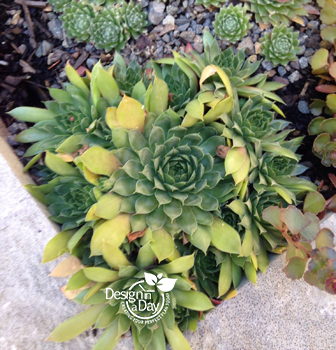
If the hen flowers without giving you any chicks you will not have a plant at all come the next spring. In other words…you will not have any plant there come spring if you lost the hen.
You may remove the center plant, also called the hen, if it is declining once the chicks are actually rooted. Then you can gently cut out the center plant. I do this primarily for looks. The colony looks better without the dead foliage of a declining hen. Here’s a fun link for propagating hens and chicks.
Support Pollinators
Once your colony is established you can let your hens and chicks flower to support pollinators. You will have to tidy up by removing the dead center rosette so the chicks can grow over the hole the next year. I used to cut all of my flowering stalks out of the rosette (or hen) but once I have enough of them… I let them flower to feed bees.
Low Maintenance Plant for Portland
Here is your takeaway – Sempervivum Hens and Chicks is an easy low maintenance plant that takes lots of sun and little water is needed for it to thrive. It looks great in the winter because it is evergreen and has fantastic texture to contrast with other low non aggressive plantings. If you are new….It’s more fun to play with plants when they don’t die. If you already love plants you will love playing around with Sempervivum so it’s a great plant for everyone.
Contact Us
Sempervivum, Hens and Chicks, House Leek? Whatever you want to call them, they are an easy and low maintenance plant for our new warmer climate. We love to create landscape plans that are low maintenance and can support our environment. All jokes about paving it over or covering your landscape with gravel aside…..those landscapes are very unattractive and do not support any of our bees, butterflies or birds. Nor do they process carbon which is something plants can do! Contact us if you want a low maintenance landscape design that is interesting, colorful and can be an asset to your home and neighborhood.

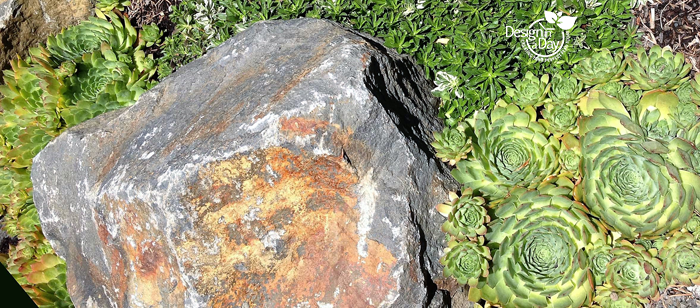
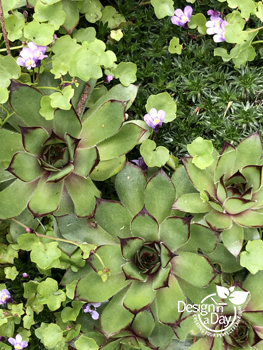
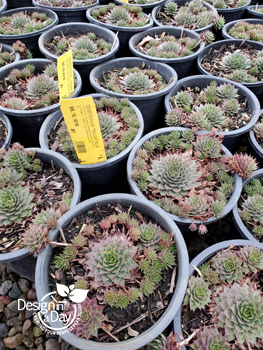
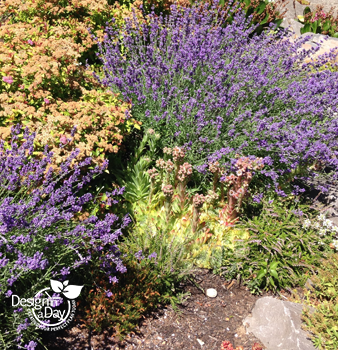
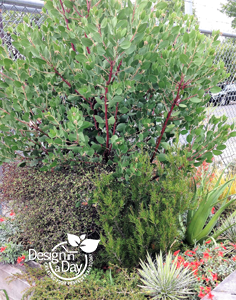
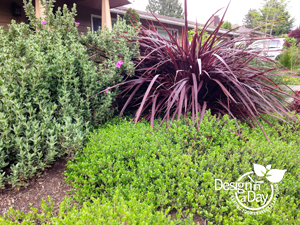
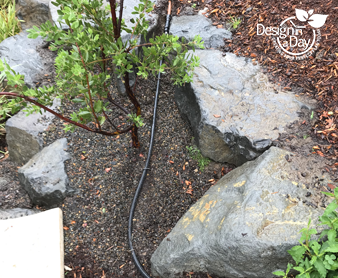
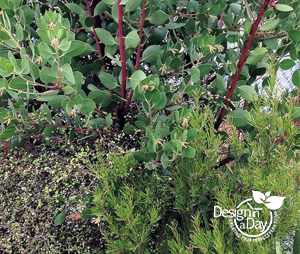
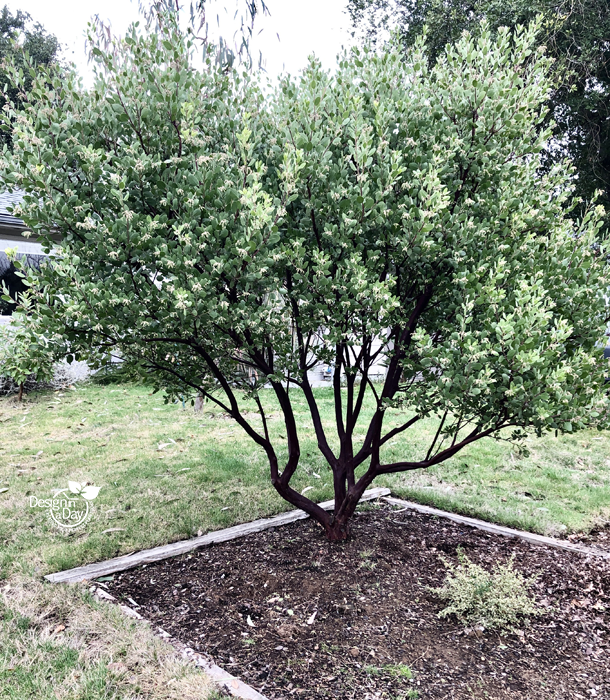
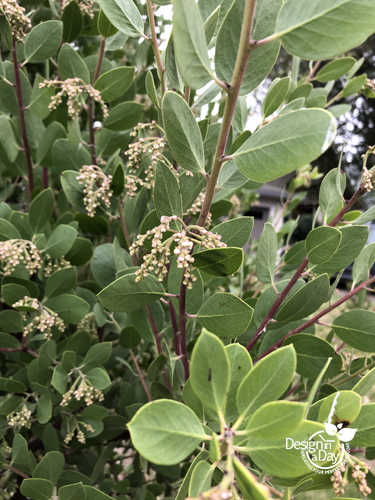
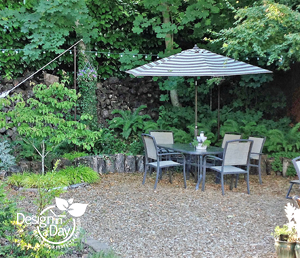 Views over the fence included other neglected yards and they had a large (evil) tree of heaven that had to go. Many plants had died or looked leggy and sun starved.
Views over the fence included other neglected yards and they had a large (evil) tree of heaven that had to go. Many plants had died or looked leggy and sun starved.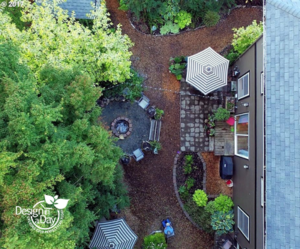 Selecting low water plants
Selecting low water plants